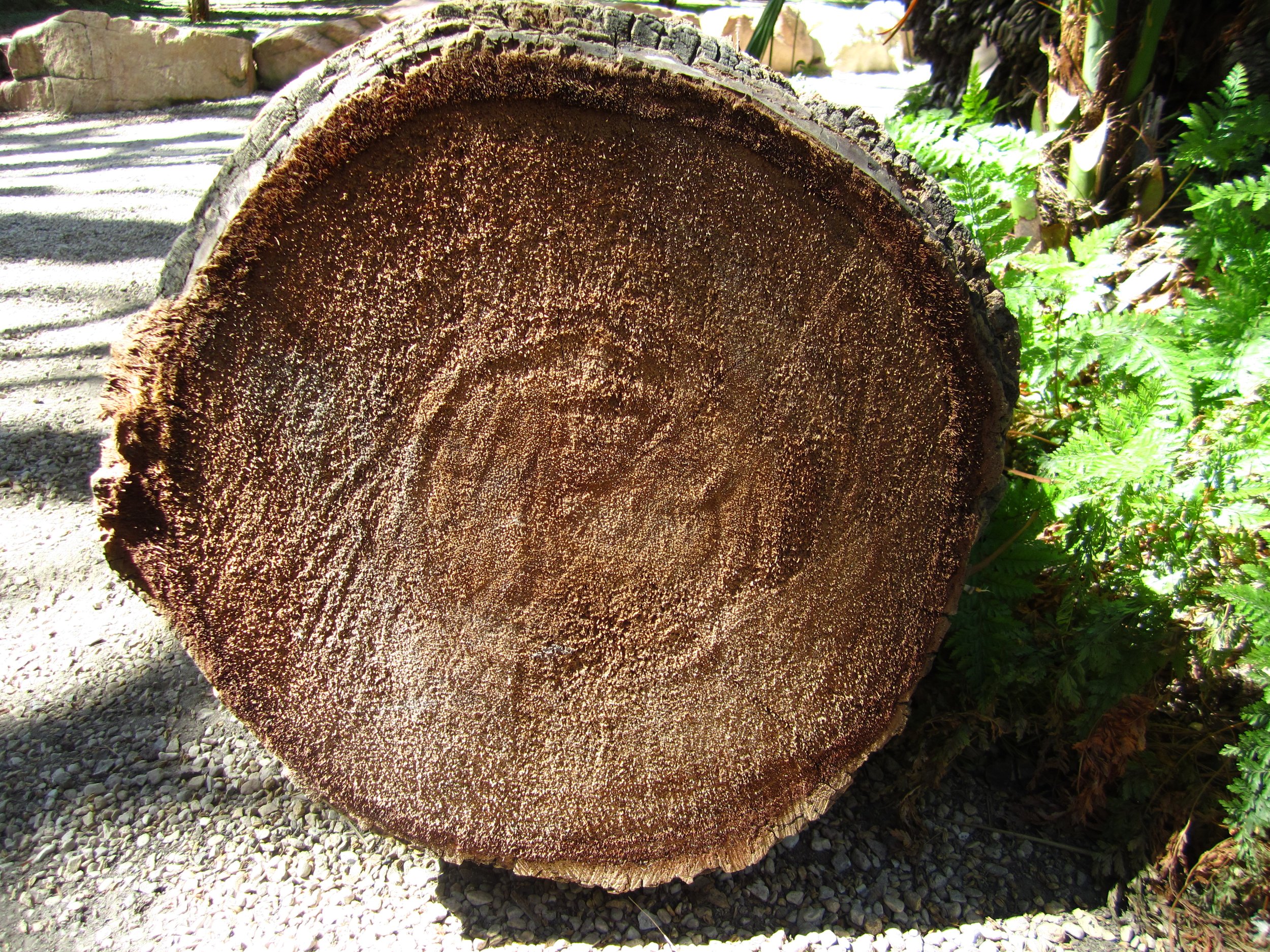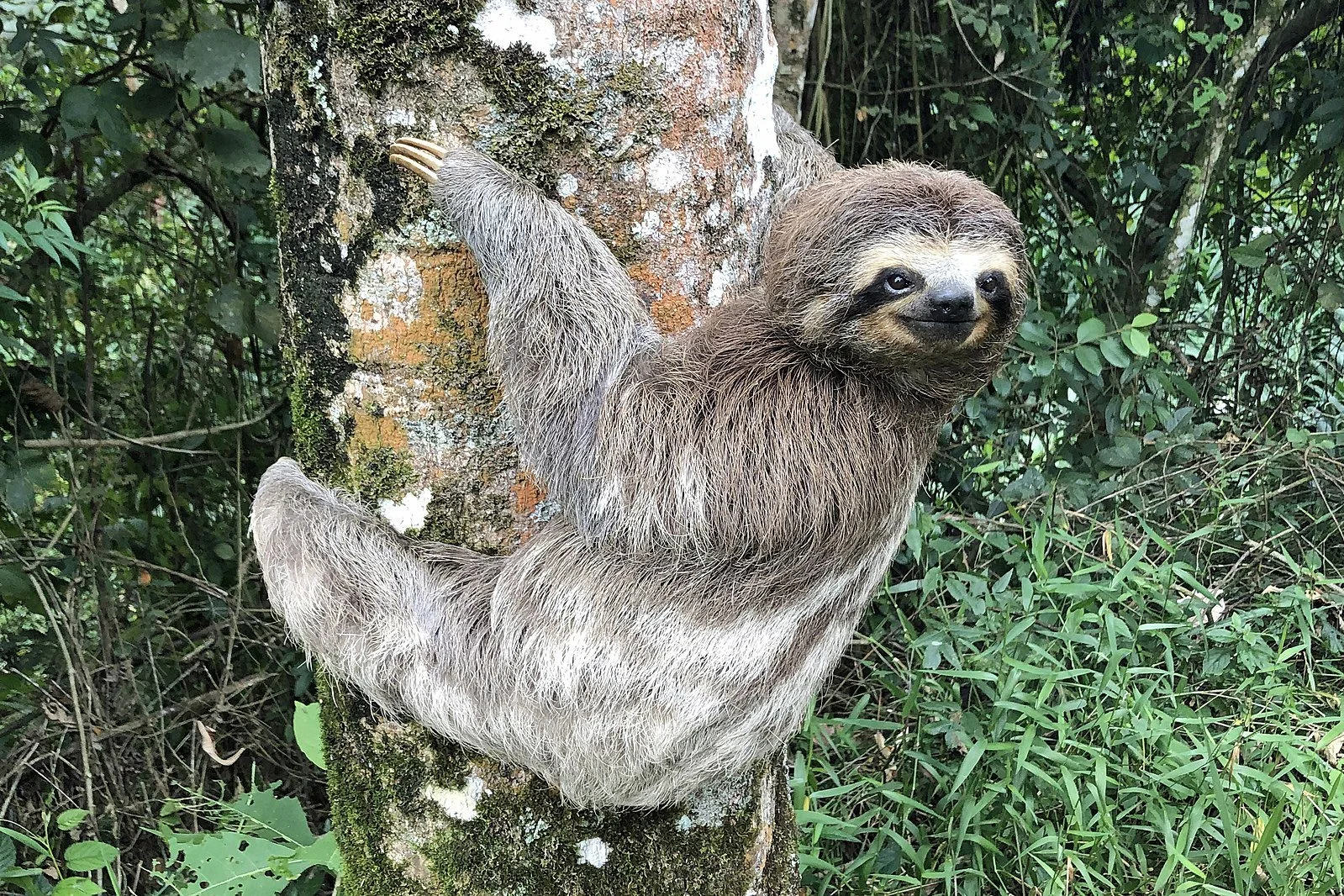How do palm trees survive hurricane winds?
The short answer
Palm trees can survive hurricane winds due to the flexibility of their stems, the aerodynamic design of their leaves, and their well-anchored root system.
The long answer
I don't mean to alarm you, but it turns out palm trees are not technically trees after all. Trees are dicots; palms are monocots. Genetically, palms are more closely related to grasses.
Palm trees:
Do not have bark. What appears as bark is not true bark but rather a bunch of fibrous, tough tissue left from old fronds (i.e. palm leaves).
Do not have branches. A healthy palm has a cluster of 30 to 50 fronds and grows new fronds from the top.
Do not increase in diameter as they age. Trees have what's known as a cambium layer that constantly produces more wood to increase the diameter of the trunk. Palm trees do not have this layer, so after they mature, palms simply grow vertically.
Have a different vascular system. Trees have organized rings of phloem (transports sugar) and xylem (transports water) layers. Palm trees have their phloem and xylem arranged in bundles, not in rings.
So palm trees are built differently than actual trees. And their unique, non-tree characteristics that help them survive hurricane-force winds of up to 145 mph.
Here are three key reasons why palm trees can survive hurricane winds:
Reason #1: They have flexible stems.
Palm trees can bend 40-50 degrees without snapping. They can do this because of their stem structure.
"Palm tree trunk" by Kadeve is licensed under CC BY-SA 3.0 DEED
As I mentioned before, palm trees are not technically trees and don't have the same stem/trunk makeup as trees. Instead of ringed layers, they have dense bundles of fibrous material, kind of like the wires in a telephone cable.
A tree's rigid structure allows it to hold the weight of a heavy branching system, but since a palm doesn't need to carry they weight of branches, it can be more flexible. Strong winds can fracture a tree, but palms just bend, bend, bend.
Reason #2: They have aerodynamic leaves.
"Palm branch" by borges is licensed under CC0 1.0 DEED.
The feather-like design of palm leaves, or fronds, significantly reduces wind resistance and potential damage. They can bend, fold, and allow both rain and wind to pass through their gaps with minimal resistance.
Reason #3: They have a wide, well-anchored root system.
Palms go for quantity over quality when it comes to their root system. Unlike trees that have a few large roots as anchors, palms have a multitude of smaller roots that spread in the upper layers of soil. This extensive root network not only stabilizes the palm but also distributes the mechanical stress of high winds across a broader area, reducing the likelihood of uprooting.
Curious about how the world works?
Today You Should Know is a free, weekly email newsletter designed to help you learn something new every Friday.
Subscribe today 👇
Check out some other curious questions:
Sources
Breyer, M. (2020, October 9). How Do Palm Trees Survive Hurricanes?. Treehugger. https://www.treehugger.com/how-do-palm-trees-survive-hurricanes-4858412
Candeias, M. (2017, September 10). How Do Palms Survive Hurricanes?. In Defense of Plants. https://www.indefenseofplants.com/blog/2017/9/10/how-do-palms-survive-hurricanes
Duval MGV. (2024, January 23). Are palm trees really trees? Here’s what you should know. UF/IFAS Extension Duval County. https://blogs.ifas.ufl.edu/duvalco/2024/01/23/are-palm-trees-really-trees/
Moreno, A. (n.d.). Why Palm Trees Are So Strong. Atlanta Palms. https://atlantapalms.com/blogs/blog/why-palms-are-strong/
Teng, Y. Y. (2023, April 25). Oil Palm Anatomy: 5 Ways An Oil Palm Differs From A Typical Tree. Musim Mas. https://www.musimmas.com/oil-palm-anatomy-5-ways-an-oil-palm-differs-from-a-typical-tree/
Thompson, L. (n.d.). Vascular Plant Morphology. Whole Plant Anatomy. https://facweb.furman.edu/~lthompson/bgy34/plantanatomy/whole_plant.htm







It’s like an American accent but with calendars.